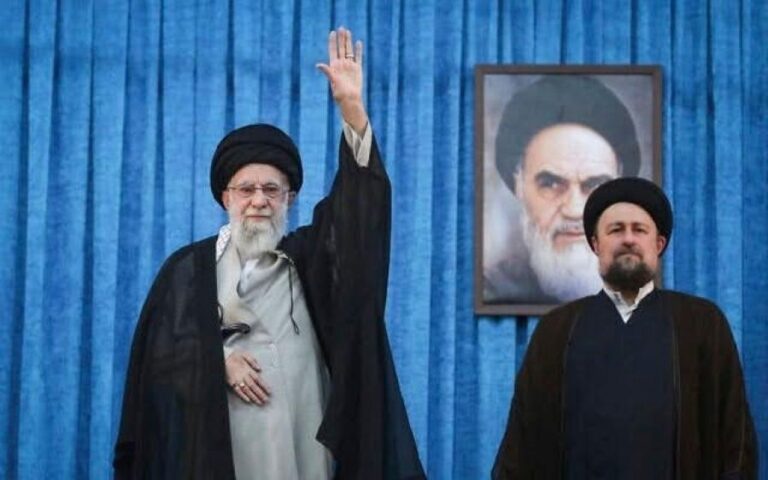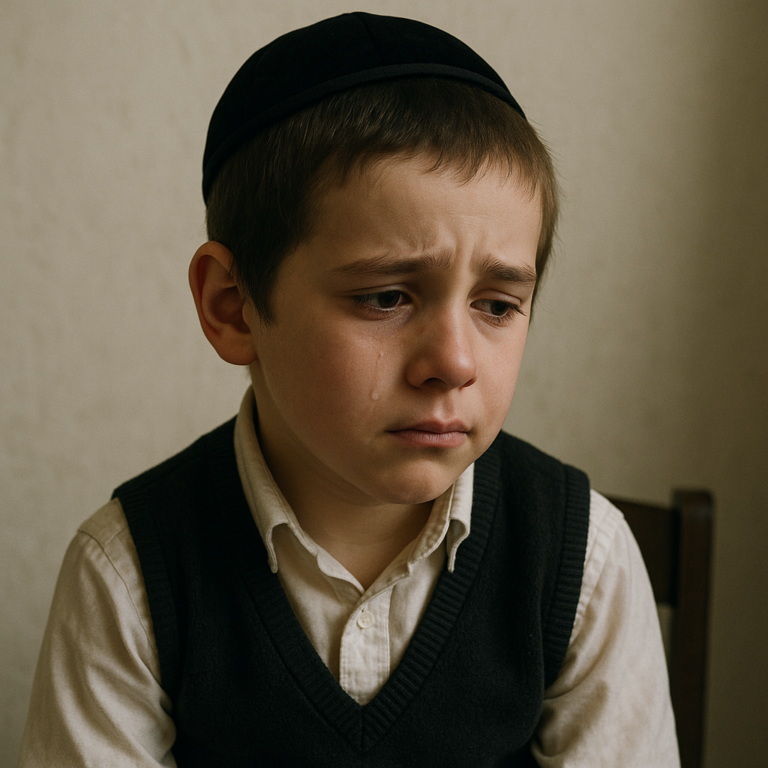 [By Rabbi Yair Hoffman]
[By Rabbi Yair Hoffman]
“What? I never heard of that!”
“I’m sorry, but I do not know anyone who eats matzah like that. It can’t be true.”
“My parents would have told me if this were true. I don’t care if you say it is in the Shulchan Aruch. This is just not done. It can’t be that tens of thousands of people are doing it wrong.”
But let’s start at the beginning. Let us remember that for centuries, Jews have tried to fulfill mitzvos in the most ideal manner possible. Often what this means is to fulfill the mitzvah in a manner that is consistent with the views of as many of the Rishonim as possible. Some people who are not accustomed to this notion will find such dedication extreme. Others, however, will realize that dedication to mitzvos and Torah observance is a manifestation of ahavas Hashem, the love we have toward G-d.
Did you ever wonder why we need two kezeisim of matzah for the first portion at the Seder, but the other times we eat it (Korech and Afikoman) you technically only need one?
Well, here is why . . .
Which Is The Lechem Mishneh?
There is a huge debate among the Rishonim as to how to understand the Gemara in Pesachim 116b. Upon what, exactly, do we recite the blessings on the night of Pesach? Normally, there is a requirement called lechem mishneh, that we must recite the HaMotzi on two whole loaves of bread. On Pesach, however, there is a requirement of lechem oni, poor man’s bread (Devarim 16:3). This refers to a broken and incomplete loaf.
Rashi, Tosefos, and other Rishonim rule that one must utilize the broken piece, but one must also recite the blessing on two whole pieces since it is no worse than any other yom tov. The Rif and Rambam, however, rule that the broken matzah takes the place of the second loaf.
Which Blessing On Which?
The debate of the Rishonim is do we make the “Al Achilas Matzah” blessing on the broken piece and the HaMotzi blessing on the whole piece? Or is it the opposite—that we make the HaMotzi on the broken piece and the Al Achilas Matzah on the whole piece? There is also a third option: that both blessings are recited on the broken piece.
- Rashi and many Rishonim hold of the first position – that the “Al Achilas Matzah” blessing is made on the broken piece and the HaMotzi blessing is on the whole piece.
- The Rashba and many Rishonim hold of the latter interpretation – that we make the HaMotzi on the broken piece and the Al Achilas Matzah on the whole piece.
- There are also a few Rishonim that hold of the view that both blessings are made on the broken piece.
The Great Compromise
Because of all these doubts, the Shulchan Aruch rules that, if possible, he should eat two kezeisim of matzah simultaneously—one from the whole piece and one from the broken piece ויאכלם בהסיבה ביחד כזית מכל אחד . We should also have in mind that we are reciting the blessings on both the whole one and the broken one.
Therefore, the ideal correct procedure is the following four-step process (see S.A. O.C. 475:1). Please note that some people will find step 4 rather difficult, so an alternative step 4 is provided later.
1. He makes the HaMotzi on all three matzos.
2. Then he drops the lower whole matzah and recite the blessing of Al Achilas Matzah on both the upper whole one and the broken matzah below it.
3. He then breaks a kezayis from both of them, wraps them together, and consumes a kezayis from each one simultaneously. Yes, that is correct: place both kezeisim in the mouth together.
4. Both kezeisim are then chewed well and split, within the mouth, in half—one kezayis on each side. Then one is swallowed, followed by the other.
If one reads the Shulchan Aruch carefully, the indication would seem that both kezeisim should also actually be swallowed together. However, both the Magen Avraham and the Mishnah Berurah (475:9) write that it is only necessary to have them in the mouth together, chew them, and separate them in the mouth, but it is not necessary to swallow them together—one after the other will suffice.
Alternative Step 4
If it is not possible to put two kezeisim of matzah in the mouth simultaneously, then he should take a kezayis from the whole matzah for the berachah of HaMotzi and, after chewing it, swallow it in its entirety. Afterward, he should take a kezayis from the broken piece, chew it well, and swallow that one in its entirety.
The Mishnah Berurah (475:10) explains that the kezayis from the whole one should be first because it is tadir, the more commonly eaten one. It is not considered a hefsek, a delay to the mitzvah of al achilas matzah because it is a necessary pre-step to the eating of the broken matzah.
If someone is unable to swallow an entire kezayis simultaneously, then he may rely on the opinion that the kezayis may be eaten in two or three swallows (Terumas HaDeshen #139).
Time Span
If a person did not follow the four steps above or the alternative, he has still fulfilled the mitzvah of matzah as long as he ate both kezeisim within the amount of time called “k’dei achilas pras.” How long exactly is “k’dei achilas pras”? The consensus is that ideally we should adhere to the two-minute requirement mentioned by the Chasam Sofer (Vol. VI #16 and 23), but at a maximum we should not go beyond four minutes (see Shiurin shel Torah).
If a person is sick or elderly and cannot at all eat the two kezeisim, he should just consume one kezayis, as the Gemara does not mention anything about two kezeisim—it is merely the manner in which the Shulchan Aruch recommends fulfilling the mitzvah according to all interpretations. Which piece should the kezayis come from? It should come from the broken matzah, since this is the view of the greater number of Rishonim. Ideally, however, he should have a tiny amount from the whole matzah as well.
How Much Is A Kezayis?
There seems to be a four-way debate in the Rishonim and Acharonim as to how the measure of a kezayis is calculated. Some say it is a bit less than half an egg, and some say a third of an egg. Others say that the egg is an unpeeled egg. Finally, there is the opinion of Rav Chaim of Volozhin that it is the size of a contemporary olive. The general custom, however, is to use a larger size than that which was advocated by Rav Chaim.
Without further complicating matters, Rav Dovid Feinstein, shlita, is quoted as saying that it should amount to 1.5 fluid ounces—for machine matzah two-thirds of the matzah, and for hand matzah a quarter matzah (see Sefer Kezayis HaShalem p. 91). This author feels that if one uses extremely thin hand matzah (such as Chareidim or Shatzer), then one should add the area of the index and middle finger to the quarter matzah. v
The author can be reached at [email protected].











13 Responses
I would pay good money for a video demonstration by Rabbi Hoffman because I think there would be great educational value in watching Rabbi Hoffman chew almost 2 whole matzos and then separating them in his mouth and then eating them in one swallow. Very good money. For educational purposes.
I would watch that video, if it didn’t get banned first. Personally I will stick to placing both kezaisim in my stomach at once, i.e. bkedai achilas pras. Sechel folks.
Since when has it become “open season” on people trying to teach Torah?
I don’t believe the Rambam required eating two kezeisim of matzah for any portion.
Dear Besalel & Squeak:
Do you have a more simple practical application of the aforementioned Halachah in Shulchan Aruch?
1. I am not sure everyone else went to Yeshiva, but that it is best to swallow as closely to at once is not something I had not heard in elementary school already.
2. Besalel – how does 2 kezaysim equate to two whole matzos?
Unfortunately Rabbi Hoffman is not entirely correct in his halachik reading of this sugya. This chumra of eating both full kezaytim in the mouth at the same time is the sole opinion of the Terumat HaDeshen. The Magen Avraham is medayek from seif 6 in shulchan aruch that the shulchan aruch holds like the terumat hadeshen at least on a lechatchilah level. However, the magen avraham has been thoroughly rejected by many achronim including the Aruch Hashulchan (seif 4), the Chatam Sofer (on chullin) and more. See Rav Ovadia Yosef’s Meor Yisrael (chelek 2 page 177) where he lists tons of acharonim who reject the Magen Avrahams reading of Shulchan Aruch. And Rav Ovadia Yosef gives his own rejection of the magen avraham in a very clear explanation. He brings achronim, and agrees with them, that neither the shulchan aruch nor the Rama hold of the terumat hadeshen’s chumra even lechatchila. He writes that this chumra is wrong to even do and lechatchila one should not practice it as it is dangerous, uncomfortable, and completely not required by halacha. He writes that “ein makom lechumra zu.” Rather a person must eat the matza bderech achila which is the normal way of eating. He quotes the chatam sofer who suggests that if one follows this chumra he might not be yotzei his obligation of matza. (Although the chatam sofer ends up rejecting his notion and concludes that it is not required even lechatchila but is permissible to do as a midat chassidut.)
Rav Ovadia does bring the mishna berura and alter rebbe shulchan aruch and chaye adam who do bring down this chumra, but he rejects their opinion and writes that they are incorrect m’ikkar halacha. He then brings the Chazon Ish, who personally did not practice this chumra whatsoever and ate his matza like a normal human being.
Therefore Rabbi Hoffman is not correct in claiming that the Shulchan Aruch mandates such a practice.
It’s not only R. Chaim of Volozhin who held that a kezayis is the size of a regular olive. It’s also Rashba (Mishmeres HaBayis 4:1) and Ritva (Shabbos 76b).
#5- For two different ways to solve this issue listen to this short shiur (in Hebrew):
http://hwcdn.libsyn.com/p/5/4/3/543a6ad63c89923b/HY-5767-74_YZR-Pesach08.mp3?c_id=1712510&expiration=1396553407&hwt=a5a2c5883edb15a37c4c93d8bfc92a1e
As I understand, this only applies to the one making the brocha. HOwever, those being yotzi with the brocha only needs one kazayis.
Rabbeinu Yona in Shaarei Teshuva teaches that we don’t perform mitzvos in a way that causes others to mock our actions. This man’s advice is not possibly how the mitzva is meant to be fulfilled. Therefore I know bvadaus that the S”A is being misinterpreted.
Dear Squeek,
It could be – but the Mishna Brurah reads it that way as did the Mogain Avrohom. As far as mocking goes, remember the Shulchan Aruch used pita like Matzah..
What does Kzait mean? That is what was meant to follow.